Donate now to support the LLIFLE projects.
Your support is critical to our success.
Your support is critical to our success.
Accepted Scientific Name: Echinopsis lageniformis (Förster) H.Friedrich & G.D.Rowley
I.O.S. Bull. 3(3): 96 (1974), as 'lagenaeformis'.
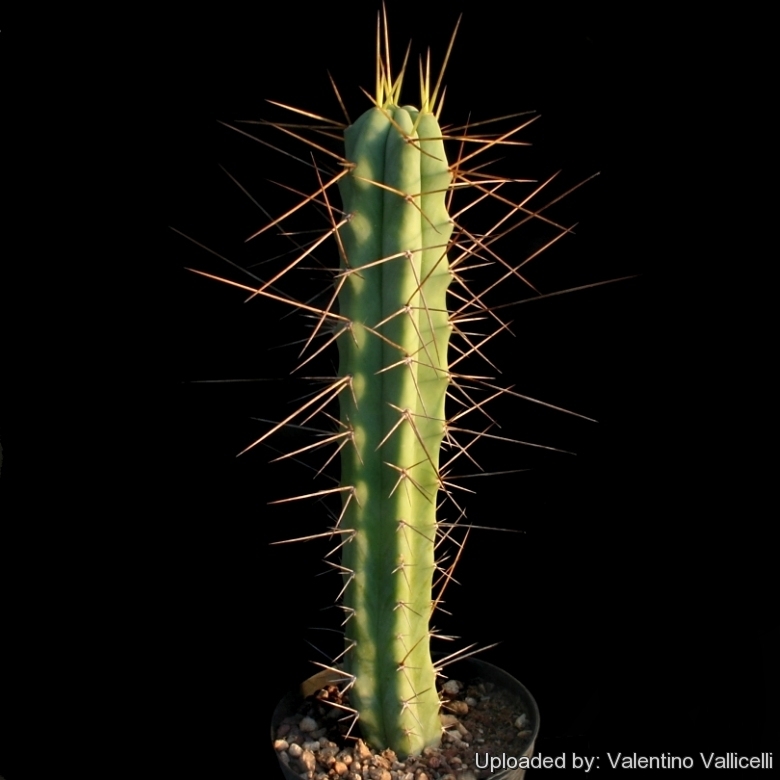
Cereus bridgesii var. lageniformis (Echinopsis lageniformis) Photo by: Valentino Vallicelli
Easily recognizable for its formidable drooping 4-10 cm long spines. Like it's relatives, this species is a quick grower and is reported to grow up to 6 m in height.
Easily recognizable for its formidable drooping 4-10 cm long spines. Like it's relatives, this species is a quick grower and is reported to grow up to 6 m in height.
Synonyms:
- Echinopsis lageniformis (Förster) H.Friedrich & G.D.Rowley
- Cereus bridgesii Salm-Dyck
- Cereus bridgesii var. lageniformis (C.F.Först.) K.Schum.
- Cereus bridgesii f. lageniformis (C.F.Först.) Schelle
- Cereus lageniformis C.F.Först.
- Echinopsis salmiana var. bridgesii (Salm-Dyck) K.Schum.
- Trichocereus bridgesii (Salm-Dyck) Britton & Rose
- Trichocereus bridgesii var. lageniformis (C.F.Först.) Borg
See all synonyms of Echinopsis lageniformis
back
Accepted name in llifle Database:Echinopsis lageniformis (Förster) H.Friedrich & G.D.Rowley
I.O.S. Bull. 3(3): 96 (1974), as 'lagenaeformis'.
Synonymy: 15
- Echinopsis lageniformis (Förster) H.Friedrich & G.D.Rowley
- Cereus bridgesii Salm-Dyck
- Cereus bridgesii var. lageniformis (C.F.Först.) K.Schum.
- Cereus bridgesii f. lageniformis (C.F.Först.) Schelle
- Cereus lageniformis C.F.Först.
- Echinopsis salmiana var. bridgesii (Salm-Dyck) K.Schum.
- Trichocereus bridgesii (Salm-Dyck) Britton & Rose
- Trichocereus bridgesii var. lageniformis (C.F.Först.) Borg
- Trichocereus bridgesii var. brevispinus (K.Schum.) Borg
- Cereus bridgesii var. brevispinus K.Schum.
- Cereus bridgesii f. brevispinus (K.Schum.) Schelle
- Trichocereus bridgesii var. longispinus (C.A.Maass) Borg
- Cereus bridgesii var. longispinus C.A.Maass
- Trichocereus crassicostatus F.Ritter
- Trichocereus riomizquensis F.Ritter
Echinopsis lageniformis f. monstruosa (Long joined type) hort.
(= inermis) a.k.a. "Penis Cactus"
Synonymy: 3 Accepted name in llifle Database:
Echinopsis lageniformis f. monstruosa (Short joined type) hort.
(= inermis) a.k.a. "Penis Cactus"
Synonymy: 3 Accepted name in llifle Database:
Echinopsis lageniformis f. monstruosa cristata variegata hort.
(= inermis cristata variegata) a.k.a. "Crested variegate Penis Cactus"
Synonymy: 2 Accepted name in llifle Database:
Echinopsis lageniformis f. monstruosa cristata hort.
(= inermis cristata) a.k.a. "Crested Penis Cactus"
Synonymy: 3 Accepted name in llifle Database:
Echinopsis lageniformis f. monstruosa variegata hort.
(= inermis variegata) a.k.a. "Variegated Penis Cactus"
Synonymy: 3
back
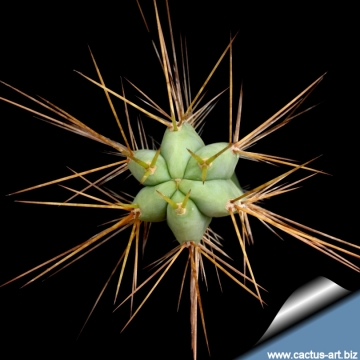
Cereus bridgesii var. lageniformis (Echinopsis lageniformis) Photo by: Cactus Art
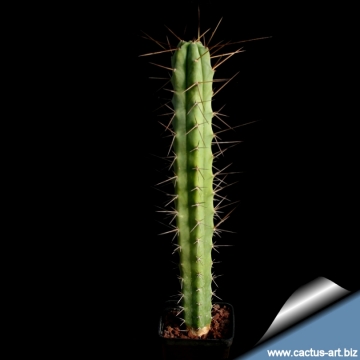
Cereus bridgesii var. lageniformis (Echinopsis lageniformis) Photo by: Cactus Art
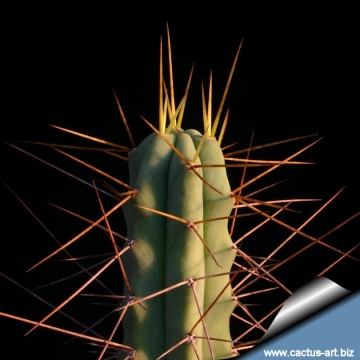
Cereus bridgesii var. lageniformis (Echinopsis lageniformis) Photo by: Cactus Art
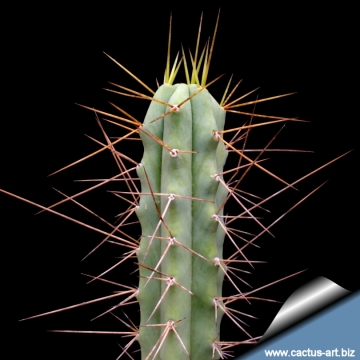
Cereus bridgesii var. lageniformis (Echinopsis lageniformis) Photo by: Cactus Art
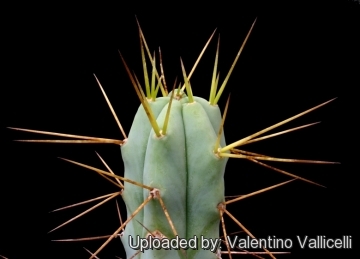
Cereus bridgesii var. lageniformis (Echinopsis lageniformis) Photo by: Valentino Vallicelli
Send a photo of this plant.
The gallery now contains thousands of pictures, however it is possible to do even more. We are, of course, seeking photos of species not yet shown in the gallery but not only that, we are also looking for better pictures than those already present. Read More...
The gallery now contains thousands of pictures, however it is possible to do even more. We are, of course, seeking photos of species not yet shown in the gallery but not only that, we are also looking for better pictures than those already present. Read More...
| Your Actions | |
|---|---|
| Back to Cereus index | |
| Back to Cactaceae index | |
 |
Back to Cacti Encyclopedia index |








